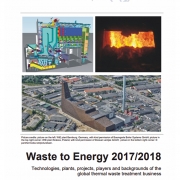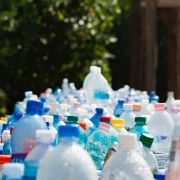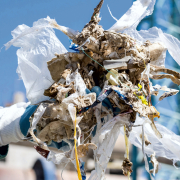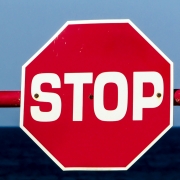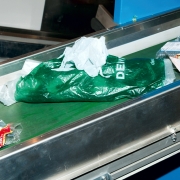Seychelles: The Islands Aim High Regarding their Waste
Blue lagoons, palm trees and offshore companies: They determined the image of the Seychelles. A few years ago, another central item came into focus: The rising level of prosperity created rising amounts of waste that flooded the local landfill. The archipelago in the Indian Ocean comprising 115 islands had – and has yet – to find solutions.
In January 2007, the Seychelles Government and the European Union signed an agreement for a total of 4,680,000 Euros, provided for activities aimed at increasing the country‘s capacity for waste disposal. Principal secretary for Foreign Affairs, Seychelles` ambassador Claude Morel then commented: “Along the way, while our economy grew and more jobs were created, the government has ensured that its environment was taken care of. Today, the reputation of our environment status internationally speaks for itself.”
Relating to recycling ten years later it could be said: “Not yet!” According to the Seychelles News Agency in August 2017, the 93,000 inhabitants of the archipelago generate about 48,000 tons of waste per year of which 90 percent end up in landfills. Students of ETH Zurich and UniSey even investigated that in 2014 alone more than 75,000 tons of waste was generated on Mahé, the biggest Seychelles island, and dumped in the Providence landfill. They found out, that the waste had almost doubled in the past decade, is still on the rise and will – by business as usual and without intervention – need seven to ten additional landfills by 2040.
Lack of Cohesive Management
The official waste management policy follows international treaties like Basel and Stockholm Convention, adopted an Environment Protection Act in 1995 and the 2003–2010 Solid Waste Master Plan for the Seychelles, approved the 2012–2020 Seychelles Sustainable Development Strategy and the 2014–2018 Solid Waste Management Policy and passed the 2016–2020 Strategic Plan of the Landscape & Waste Management Agency (LWMA). Therefore, the legal and policy framework ultimately allows and prevents waste infrastructure implementations. But as the comprehensive case study of the ETH Zurich in 2016 criticized among others, in practice the contracts between the governmental institutions sometimes overlap, often fail to define the specific tasks and lack to ensure that all objectives are fulfilled. Another paper of ETH Zurich in 2017 gives account of various cases where implementations were severely delayed or even forgotten mostly because they did not lay specific, tangible actions with liable people responsible for management or enforcement. There is a lot of financial support for Seychelles` waste treatment. The Consolidated Fund provides 11,314,000 Euro, the Waste Management Trust Fund finances partly the levy system for PET bottles and aluminum cans, the Environment Trust Fund has an annual budget of approximately 340,000 Euro, the Providence II landfill was paid for by the European Development Fund, the landfills Amitié on Praslin and L’Union on La Digue were grant-aided by the Praslin Development fund until 2010, more than 1.1 million Euro is generated annually from waste collection, and there are some more financial, legal, and technical solutions to improve waste management in the Seychelles.
Mostly transferred to controlled landfills
But still the archipelo’s municipal waste is collected primarily from communal bin sites, compacted in specialized trucks and transferred to controlled landfills. All of the Seychelles landfills are owned by the government, except that Amitié and L’Union have been taken over by LWMA in 2012 and Providence, the landfill on Mahé island, operated by the government-contracted company STAR since 1996. Most of the major waste fractions are landfilled: Incentives or mechanisms to find alternatives are missed. STAR, for instance, is paid a flat fee per month instead, without the need or even motivation to separate more waste or divert it from landfilling. So, the company only cares for PET bottles, aluminum cans and large scrap metal.
Urgent need to become involved
The recycling businesses in the Seychelles had to fight against high costs of transportation, high overheads, limited public sorting corporation, limited operating space, lacking basic resources, lack of infrastructure, lack of sensitization of local communities, canceled government subsidies and a poor marketing of finished products. In a comprehensive status report of the local non-governmental organization Sustainability for Seychelles and others, Elke Talma and Michele Martin already in 2013 noticed “an urgent need for civil society organizations and the private sector to become more actively involved in helping Seychelles reduce the amount of waste going to landfill”. Their survey with 22 representatives of waste management organizations revealed that three-quarter of the interviewed companies where operating actively; 41 percent of them made a profit – mainly waste exporters and the redeem centers, the latter subsidized by the government. Most organizations were engaged in PET bottles, glass, scrap metal and waste oil, followed by metal cans, electronic waste and batteries. In total, Talma and Martin estimated 300 smaller operators that were engaged in the commercial recycling, processing and exporting sector. But the ETH Zurich study balanced: “The small economies of scale prevent waste businesses from generating revenues to overcome operation and investment costs.”
Initiatives are on the way
Despite many obstacles, progress was made. In 2014, Surya Enterprises exported 2,000 tons of scrap metal along with 60 to 100 tons of used car batteries annually. In summer 2015, the youth-led not-for-profit organization SIDS Youth Aims Hub inaugurated a Seychelles free from plastic bags campaign. In 2017 Donald Ernesta ran the local DE-Recycling company: Depending on informal collections, it is crushing huge volumes of aluminum cans and exports them by cargo containers. Seychelles Breweries were involved in the recycling of glass by refunding returned bottles and turning the glass waste – 125 tons of bottles per year – into building material. In absence of an implemented national plan for e-waste, S4S in September 2017 partnered with telecommunication and phones companies to drive the e-waste collection on its own. In October 2017, the redeem centers of Harini company collected and shredded three million PET bottles and aluminum cans and exported them to China. At the first of July 2017, the Cabinet of Ministers of Seychelles reacted to a major solid waste management problem and brought two regulations regarding the ban of plastic bags, plastic utensils and polystyrene boxes in force. In March 2018 a governmental plan was published of investing 500,000 US-Dollar in an industrial crusher for organic waste entering the landfill at Providence to sort, crush and compost the material to be used in landscaping and others.
To strengthen recycling programs
Meanwhile, the Seychelles government seems to have realized the importance and relevance of adequate waste treatment. In its budget for the fiscal year 2017, the Minister of Finance, Trade and Economic Planning offered to “focus on the implementation of an integrated waste management strategy aim at diverting waste from the landfill through recycling”. He also wanted “to strengthen its recycling programs for PET, beverage cans, scrap metal, old car batteries, tires and used oil and work on an initiative to recycle glass bottles”. And he promised to allocate 107 million Euro in 2017 to the LWMA, responsible for the management of waste and overall landscape development and management of Seychelles, “to allow them to discharge their function”. The next budget for the fiscal year 2018 referred to cleaning and landscaping, waste collection for municipal and commercial waste and landfill management on La Digue, connected with an 740,000 Euro increase “to cater for these services” and the expectation of “a number of contractors to participate actively in the tender process”. Hence, it might come true, what Elke Talma and Michele Martin predicted in 2013: “With the right Government support, there is definitely a future in waste management.”
Furthermore, the political progress offers possibilities for domestic as well as for foreign provider. Consequently, the Seychelles Investment Board subsumes solid waste management, recycling and design and packaging (with emphasis on environmental sustainability) under “local investment areas”. And the financial resource needs for water, sanitation and waste management to implement the Seychelles Sustainable Development Strategy 2012-2020 Strategy are estimated at 179.5 million US-Dollar. And the Strategy paper clarified: “Whilst infrastructure investments in utilities can be prohibitively costly, integrated approaches such as using waste-to-energy technologies are likely to become more common.”
Photo: pixabay
GR 3/2018


